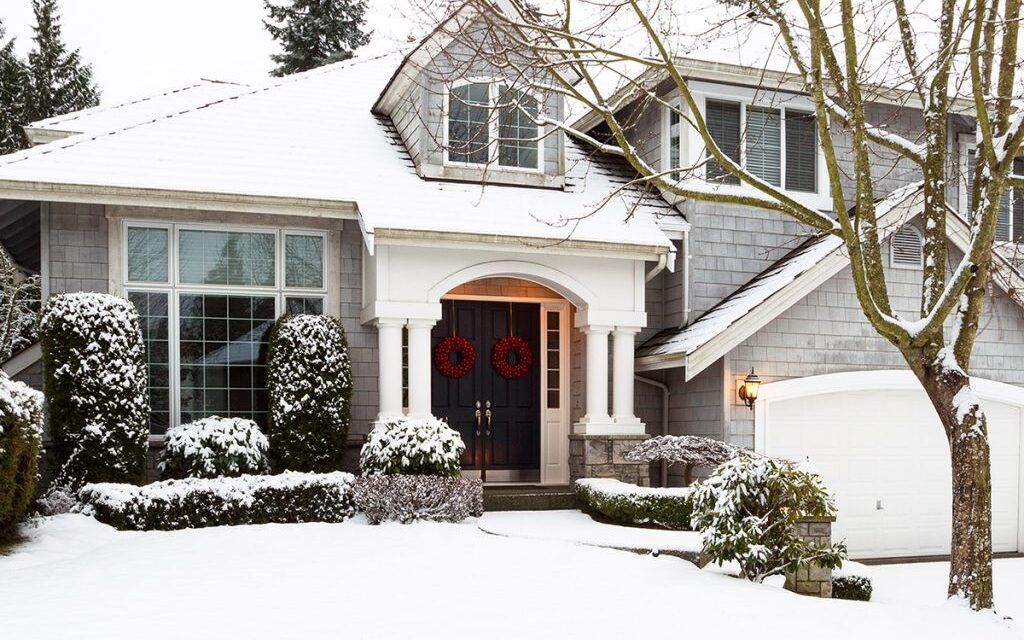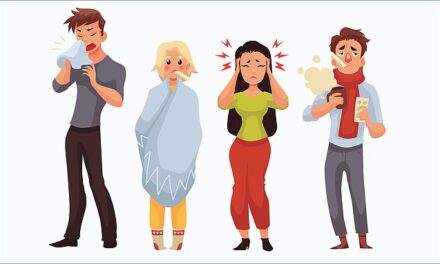Winter precaution checklist for home
Winter Safety Tips
Winter is a beautiful time of the year; however, winter weather conditions can create dangerous situations. The Centers for Disease Control and Prevention (CDC) provides several winter safety tips that can help you prepare for freezing temperatures. When it comes to preparing your home, car, and family during the winter months, safeguard yourself with these winter safety tips.
Read the full article of Pritish Kumar Halder, and get winter safety tips.
Prepare your home!
- Winterize your home with sound insulation. Use caulk and weather-strip frames for your doors and windows.
- Heat your home safely. If you plan to use a wood stove, fireplace, or portable space heater, be extremely careful and follow the manufacturer’s instructions. Protect your home with tips and tools from the U.S. Fire Administration.
- Have a qualified technician inspect your furnace system and vents to confirm they are functioning properly.
- Check the batteries in your carbon monoxide and smoke detectors.
- Keep an emergency kit in your home that includes nonperishable food, water, flashlights, extra batteries, a first-aid kit, extra medicine, and baby items, if necessary.
Prepare your car!
- Make sure your tires have enough tread and check the air pressure for winter driving.
- Keep your gas tank full to help prevent ice in the tank and fuel lines.
- Replace your windshield-wiper fluid with a wintertime mixture.
- Check antifreeze levels and have the radiator system serviced.
- Equip your car with an emergency kit that includes water, snacks, a first-aid kit, blankets, a flashlight, extra batteries, a portable cell phone charger, and emergency flares.
Prepare your family!
- Check the air temperature and wind-chill factor before engaging in outdoor activities.
- When participating in outdoor recreation, take a buddy and carry a cell phone.
- Dress in layers of light and warm clothing. Keep your feet, hands, and head well covered.
- Avoid overexertion when engaging in outdoor tasks, such as shoveling snow. Take breaks when you feel tired or strained.
- If you have pets, bring them indoors. If you cannot bring them inside, provide adequate shelter to keep them warm and ensure they have water access.
- Sprinkle cat litter or sand on icy patches.
- Be prepared for an emergency. Know the signs of frostbite and hypothermia. Seek emergency help right away if numbness or pain doesn’t go away.
Taking preventive action is your best defense against having to deal with extreme cold-weather conditions. By preparing your home, car, and family in advance for winter emergencies and observing safety precautions during extremely cold weather, you can reduce the risk of weather-related health problems. For more winter weather safety tips, visit the CDC website.
Winterizing your home is no fun when it’s already cold out, so fall is the time to get winterized in preparation for the season. Proper winterization involves a systematic review of your home’s HVAC equipment as well as the critical structural and mechanical systems. Take care of these elements before winter, so you can enjoy the snow in cozy comfort.
Here are key areas of your home that you should focus on when winterizing.
Winterize the Heating System
The heating system is perhaps the most critical element for a home in the winter. The following tasks will help you prepare them.
- Test run: No later than October, give your heating system a test run. Turn the thermostat to heat mode, and set it to 80°F. You should hear the furnace turn on, and warm air should begin to blow within a few minutes. If the furnace is running fine, turn the thermostat back to its normal setting. If the furnace is not running properly, you can try to diagnose it yourself. Depending on what’s wrong, you might be able to fix it yourself, or you might need to call a qualified service technician.
- Replace the air filter: Put in a new, clean air filter. It’s easy, and doing so will ensure a free flow of air and a cleaner environment. Each furnace has its requirements for air filters, so follow the manufacturer’s recommendations.
- Check the fuel supply: If you have a propane or fuel oil furnace, make sure your fuel storage tank is topped off and ready to go.
- Inspect and clean heating vents: Clear obstacles to heating vents, so air can freely flow. Many experts recommend having a service technician come in and clean the vents every year or two.
- Check for carbon monoxide leaks: This silent killer can easily be detected with either an inexpensive test badge or a battery-operated alarm. If you discover problems, call in a professional to identify and correct the cause of the leak. Usually, this involves leakage in the exhaust system of a furnace or other fuel-burning appliance, such as a water heater. Don’t put this work off; a carbon monoxide leak is a very dangerous situation.
- Check exhaust vents: Some furnaces and boilers, as well as gas water heaters, vent through a chimney, while newer high-efficiency models might vent through plastic pipes running through a side wall. Make sure these vents are open and free of obstructions, which can block the vent pipes and interfere with the furnace’s ability to burn efficiently and properly vent exhaust gases.
Winterize the Air Conditioning System
Often neglected is one of the most important components of a cooling system: the condensing unit outside that churns away in the heat of summer. This component needs a little attention as winter approaches.
- Clean the condensing unit of debris: Using a hose with the spray head set to the highest pressure, clean the fan blades and condensing coils of debris and dirt. Let the unit dry completely before covering it for the season.
- Cover the condensing unit: Left unprotected, the condensing unit can be damaged by wet leaves and debris that contribute to rusting and freezing of internal components. Although these units are designed for outdoor use, covering them with a breathable waterproof cover made for that purpose goes a long way to extending the life and efficient performance of the unit.
- Winterize window air conditioners: As for window air conditioners, remove them if possible and store them for winter. Left in windows, these appliances are very hard to seal effectively against cold drafts. If they can’t be removed, then close the vents and make sure to get an air conditioning cover similar to a condensing unit cover.
Inspect the Fireplace, Chimney, and Flue
Although largely ignored in warm weather, a wood-burning fireplace and chimney can be a major source of cold air leaks and other issues in winter. The chimney and fireplace need some inspection and service before winter sets in.
- Clear obstructions: Check to make sure the chimney is clear of any nests from birds, squirrels, or other small animals.
- Check the damper: Make sure it opens and closes fully and that it can be locked in the open or closed position.
- Check the chimney draft: Make sure the chimney will draw up the fire and smoke properly. Test this by taking several sheets of newspaper and rolling them up. Then, with the fireplace damper in the open position, light the newspaper in the fireplace. The smoke should rise from the chimney. If it doesn’t, you have an obstruction and need to call a professional to clean the chimney.
- Have the chimney cleaned: If it has been several years since you had your fireplace chimney cleaned, have it done by a professional chimney sweep.
- Inspect the firebrick in the fireplace: If you see any open mortar joints, have them repaired immediately. A fire can spread into the stud wall behind the masonry firebrick through open mortar joints.
Winterize Water Pipes
Water supply pipes are especially susceptible to freezing in cold weather, and burst pipes from freezing can cause some of the most expensive repairs in the home. Exposed drain pipes can also occasionally freeze, so it is important to systematically review the plumbing pipes in your home.
- Insulate exposed piping: If you have any exposed water pipes in uninsulated spaces—such as in a crawlspace, an attic, exterior walls, etc.—make sure to insulate them at a minimum with foam insulating sleeves. Ideally, you should wrap them with electrical heating tape first and then insulate them.
- Exterior faucets: Known as hose bibbs or sillcocks, the exterior faucets need to have their water supply turned off inside the house, and you also need to drain water from them by opening up the exterior faucets. Also, consider an insulated cover for the hose bibb. And remember to disconnect your garden hoses and drain them.
- Seasonal shutdown: If you are shutting down a property for several months to leave for the winter, you should always shut off the water supply and drain the plumbing system. If a leak were to occur when you are not present, the damage could be catastrophic.
Review Insulation
Major insulation upgrades aren’t something to do hurriedly right before winter. A home that is in serious need of more insulation should be carefully evaluated to ensure a quality job. But there are some areas you can easily insulate to help prepare for winter.
- Insulate the water heater: Use an insulating blanket you can buy at the hardware store.
- Insulate exterior outlets and switch plates: Use inexpensive foam sealing gaskets.
- Seal unused fireplaces: If you don’t use your fireplace and it leaks air, you can cut a piece of fiberglass insulation and stuff it into the fireplace behind your fireplace screen to block the cold air coming down the chimney. Of course, you’ll need to remove this whenever you use the fireplace.
Seal Doors and Windows
Infiltration of cold air from air leaks around doors and windows is a significant contributor to your heating bill. An easy way to reduce your bill is to minimize these drafts with simple weatherstripping.
Windows
- Inspect the outside moldings: Look around windows for damaged or missing caulking. Use a good-quality exterior caulk to seal any gaps you find.
- Check old windows: Windows with traditional glazing putty holding the glass panes in the frames might have seen the putty crack and fall out. Reglaze any windows that have missing glazing putty.
- Inspect window tracks: Clean the tracks of any debris that might be interfering with seals.
- Inspect the locking mechanisms: Make sure they work adequately. You will want to lock them securely once winter sets in.
- Check for air leaks: On a day when it’s windy outside, close your windows and feel for air leaks. Typically, leaks will be found at the edges where the window is hinged, slides, or meets another unit. You can tape plastic over windows to seal them, but this can be expensive and rather unattractive. A better and easier solution is to use inexpensive rope caulk to seal leaks. Press the rope to caulk into all the joints where the air is leaking.
Doors
- Inspect caulking: Look around the outside moldings of door frames, and add new exterior-grade caulking if necessary.
- Inspect and replace any failed weatherstripping: Check the weatherstripping around doors, including the door sweeps attached to the bottom of the door.
- Check for air leaks: Feel around doors for air coming in, and use rope caulk where applicable to seal gaps.
Inspect the Roof
Do a quick check of the roof to prepare for winter. Either hire someone to inspect it if you are not comfortable doing this yourself, or inspect it yourself wearing well-fastened shoes with nonskid soles.
- Inspect the shingles: Check the roof for missing or damaged shingles and have them replaced.
- Inspect the flashing: Check to flash around chimneys and other roof projections, which are often the source of leaks. Have repairs made if necessary.
- Inspect the gutters: Make sure gutters and downspouts are clean with no leaves or debris clogging them. Wet leaves remaining in the gutters over winter add significant weight and volume when frozen, increasing the risk of damage. Also, make sure downspouts are solidly attached.
Winterize the Sprinkler System
The sprinkler system should not be overlooked when preparing your home for winter. If you have a lawn service that handles this, have it come to drain and winterize the system no later than October. Winterizing a sprinkler system is also fairly easy to do yourself. It involves shutting off the water, draining the pipes, blowing them free of water, and then opening test cocks on the vacuum breaker to allow air into the system. This prevents trapped water from freezing and cracking the plastic water lines.
Winterize the Pool and Spa
How you winterize a pool and spa will depend on which type you have; an above-ground pool can require many different procedures than an in-ground pool. Have a pool maintenance person perform all necessary winterization procedures. If you do this work yourself, make sure to carefully follow the pool or spa manufacturer’s recommendations for winterizing it.
Prepare the Landscape and Store Outdoor Items
You’ll want to prepare your yard for winter, too. Follow standard lawn and garden winterizing procedures, which entail care for the grass, flower beds, and other plantings. You’ll also have to deal with outdoor furniture and other items.
- Cover patio furniture: Protect furniture, or bring it indoors to store for the winter.
- Seal or stain a wooden deck: This might not be necessary every year, but a properly sealed deck will be more resistant to winter damage.
- Clean and seal concrete: Before winter is a good time to patch any cracks or damage to concrete steps or walkways.
- Drain the lawn mower gas: Drain a gas mower and other gas-powered lawn tools, and store them somewhere dry and safe for the winter.
- Drain water features: Unplug the pumps to water features, such as fountains.
- Clean and store garden tools: Make sure tools are free of dirt and stored in a dry place.
- Clean and store the grill: Thoroughly clean the grill and other barbecue equipment, and either cover it or bring it indoors for winter.









